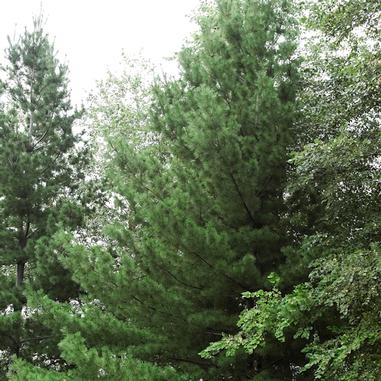Blanched and pallid, cracked and withered, the landscape was slowly succumbing to the dry, repressive heat. Lawns crackled and crunched underfoot as they lay dormant and drained. Desiccated leaves scraped and scratched their way along the ground. The soil resembled a great jigsaw puzzle as drought fissures became more pronounced.
Fall it is, but seasonable it is not. We haven’t had much measurable rain since July, and thus far, there is no real relief on the horizon. Generally, at this time of year, rain is a somewhat constant and reliable thing and temps are much cooler, but this simply is not the case, and again, our intervention is required.
Even though we’re nearing the end of the growing season, many plants have been stressed by the unseasonable conditions. Just to give you some perspective, average rainfall for our area for the month of September is 3.19″. Thus far, we have only received .32″, and sending plants into Winter in anything less than peak health can be disastrous.
Young plants are particularly susceptible to drought damage as are some Evergreens, like Arborvitae. Hydrangeas are also very drought sensitive. Keep an eye on Maple, Birch and Katsura trees as well. Containers also dry out very quickly and should be monitored on a daily basis. Look for discoloration/yellowing, curling and wilting, and premature leaf drop. Plants need about 1″ of water per week, so intervention is imperative. The same supplemental watering methods should be employed that we discussed earlier in the season. And by all means, don’t forget your local critters, like birds and squirrels, who too are suffering from the lack of moisture. Keep bird baths filled and cleaned.
Even though the calendar says Fall, and we’re about to enter the glorious month of October, our landscapes tell a different story, an unusual narrative that we mustn’t ignore.
As always, reach out to Sweeney’s. We, like you, want your plants & lawns to be healthy and strong, particularly before the onset of Winter.
Plant of the Week


Eastern White Pine
Native Pine with long, slender bluish-green needles, which are soft and flexible, grows 50-80′ tall and 25-30′ wide. Has a wispy, airy look, Prefers sun to partial shade and moist, well-drained soil, although tolerant of most soils. Fast grower that can be transplanted easily and is widely used as Christmas Trees. Attracts wildlife and works well as a wind break.
“For summer there, bear in mind, is a loitering gossip, that only begins to talk of leaving when September rises to go.”
-George Washington Cable
Best wishes,
Kim Sweeney

Weather conditions are yet another reason to use plants native to our area…
You are absolutely correct! Native plants offer a whole host of benefits and are beautiful to boot!